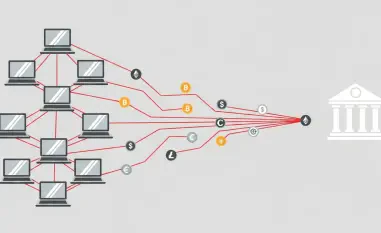In today’s digital landscape, identity platforms serve as the critical backbone for secure access across organizations, ensuring that employees, customers, and systems interact seamlessly and safely. However, the prospect of migrating from one identity provider to another can evoke significant apprehension due to the high stakes involved. Potential risks such as system downtime, disrupted integrations, compliance violations, and frustrated users loom large, threatening operational stability. Despite these challenges, migration often becomes necessary to achieve cost efficiencies, enhance security, or align with evolving business needs. The good news is that with meticulous planning, a clear strategy, and a focus on minimizing disruption, these hurdles can be overcome. A well-executed transition not only mitigates risks but can also pave the way for long-term improvements in efficiency and security posture, transforming a daunting process into a strategic opportunity for organizational growth.
1. Understanding the Challenges of Identity Migration
Identity migration can be a daunting endeavor, primarily because a poorly managed process can lead to severe consequences for any organization. Lost productivity, dissatisfied customers, and financial setbacks are just a few of the potential outcomes when transitions are not handled with care. Identity systems are deeply embedded in nearly every facet of business operations, from human resources platforms to customer-facing portals. A single misstep during migration can cascade into widespread disruptions, making the stakes incredibly high. Beyond immediate operational concerns, the process often unearths underlying issues such as fragile integrations or outdated technologies that have been ignored for too long. These hidden problems can complicate even the most carefully planned migrations, underscoring the need for thorough preparation and a proactive approach to risk management.
Moreover, the complexity of identity migration is compounded by stringent compliance requirements that organizations must navigate. Standards such as SOC 2, HIPAA, and DORA impose strict guidelines on how identity data is handled, adding layers of scrutiny to the process. Even with robust planning, unexpected challenges often emerge, including edge cases or broken processes that were not anticipated. These unforeseen issues can derail timelines and frustrate stakeholders if not addressed swiftly. The pressure to maintain seamless access while adhering to regulatory mandates creates a delicate balancing act. This reality highlights why many organizations hesitate to undertake such migrations, yet it also emphasizes the importance of strategic foresight. By acknowledging these challenges upfront, businesses can better prepare to tackle them, ensuring that the migration process does not become a liability but rather a stepping stone to enhanced security and efficiency.
2. Reasons to Embrace Identity Migration
Despite the inherent challenges, there are compelling reasons for organizations to pursue identity migration as a strategic initiative. Often, the primary drivers include achieving significant cost savings, streamlining cumbersome processes, and establishing a more robust identity foundation for future scalability. Enhancing compliance with regulatory standards and bolstering overall security posture are also critical motivators. For some, the goal is to unify identity management across disparate cloud and on-premises systems, eliminating silos that hinder efficiency. Others may seek to escape unpredictable pricing models or gain greater flexibility to integrate a wider array of tools and applications. These motivations reflect a broader need to adapt to changing technological and business landscapes, where outdated systems can become a liability if not addressed proactively.
The true value of identity migration, however, often becomes apparent only after the transition is complete. When executed effectively, it serves as a catalyst for broader modernization efforts, enabling organizations to rethink and optimize their digital infrastructure. A successful migration can break down barriers that previously limited innovation, allowing for smoother operations and better user experiences. It can also position a company to respond more agilely to future challenges, whether those involve new security threats or evolving compliance requirements. This transformative potential underscores why organizations should view migration not as a mere technical necessity but as an opportunity to build a stronger, more resilient foundation. By focusing on long-term benefits rather than short-term hurdles, businesses can turn a complex process into a competitive advantage that drives sustained growth.
3. Defining Clear Objectives for Migration
The first critical step in any identity migration is to establish a clear set of objectives that guide the entire process. Whether the aim is to reduce licensing costs, enhance security measures, improve compliance alignment, or simplify administrative tasks, defining these goals upfront is essential for success. Engaging stakeholders from across the organization is a vital part of this phase, as their input helps align the migration with broader business priorities. Their perspectives can uncover dependencies or requirements that might otherwise be overlooked, ensuring a more comprehensive strategy. Additionally, stakeholder buy-in fosters support for user adoption, which is crucial for a smooth transition. Measurable success metrics, such as reduced helpdesk ticket volumes or time saved on routine tasks, should also be identified to evaluate the migration’s impact effectively.
Beyond setting goals, this initial phase requires a deep dive into understanding the specific needs and challenges of the organization. Different departments may have unique priorities—HR might focus on seamless employee onboarding, while IT emphasizes security protocols. Reconciling these varied interests into a unified vision demands open communication and collaboration. Stakeholders can also play a key role in identifying potential risks early, allowing for proactive mitigation strategies. For instance, involving compliance teams ensures that regulatory requirements are baked into the migration plan from the start. This collaborative approach not only clarifies the purpose of the migration but also builds a sense of shared ownership among teams. By laying this groundwork, organizations can avoid common pitfalls and set a solid foundation for the subsequent stages of the migration journey.
4. Conducting a Comprehensive Discovery Process
Once objectives are defined, the next step is to build a detailed inventory of the current identity ecosystem through a thorough discovery process. This involves cataloging all users, groups, applications, MFA policies, SCIM connections, and integrations managed by the existing identity provider. Such an exhaustive assessment is critical to understanding the full scope of the migration and identifying potential risks or dependencies that could disrupt the process. Uncovering these elements early helps prevent surprises down the line, such as undocumented connections or unsupported legacy systems that might not translate easily to the new platform. A comprehensive discovery phase acts as a diagnostic tool, revealing the intricacies of the current setup and providing a clear picture of what needs to be addressed before any transition begins.
This stage also serves as an opportunity to evaluate the readiness of the organization for migration. By mapping out every component of the identity infrastructure, teams can pinpoint areas of vulnerability, such as outdated policies or applications with limited compatibility. This detailed understanding allows for better resource allocation and prioritization during planning. For example, high-risk areas might require additional testing or specialized expertise to ensure a smooth transition. Additionally, documenting these findings creates a valuable reference for future troubleshooting or audits, ensuring transparency throughout the process. The discovery phase is not just about gathering data—it’s about building confidence that the migration can proceed with minimal disruption. A meticulous approach here sets the tone for the planning and execution stages, reducing uncertainty and aligning efforts with the defined objectives.
5. Crafting a Detailed Migration Plan and Design
With discovery complete, the focus shifts to planning and designing a migration strategy that minimizes risks and ensures continuity. This begins with mapping existing identity features—such as MFA policies, custom claims, and application connectors—and identifying their equivalents in the new system. A phased approach is often advisable, segmenting users and applications into manageable waves based on business units, user groups, or criticality. This staged method helps control the scope of each transition, making issues easier to isolate and resolve. To further mitigate risks, fallback plans like dual-run environments or rollback procedures should be documented. Leveraging sandbox environments for testing before any production changes are implemented is also crucial to avoid unexpected disruptions during the final cutover.
Effective planning also requires anticipating potential challenges and building safeguards into the design. For instance, prioritizing critical applications for early migration waves ensures that essential operations remain unaffected. Detailed timelines and communication plans should be established to keep all stakeholders informed of progress and any adjustments. Testing in a controlled environment allows teams to simulate real-world scenarios, identifying gaps in compatibility or performance that might not surface until deployment. Additionally, clear documentation of each step in the plan serves as a roadmap for execution, ensuring consistency across teams and phases. This meticulous preparation transforms a complex migration into a series of manageable tasks, significantly reducing the likelihood of costly errors. A well-designed plan is the blueprint for success, guiding the organization through the transition with precision and confidence.
6. Executing the Migration with Precision
The execution phase is where planning translates into tangible action, requiring careful coordination to ensure a seamless transition. It starts with migrating user accounts using bulk import tools, such as CSV files, APIs, or directory synchronization methods, to transfer data efficiently. Next, applications are transitioned by rebuilding or importing SSO and SCIM connectors, leveraging either pre-built integrations or custom configurations as needed. Security policies, including MFA rules, password requirements, and group mappings, must be replicated to maintain consistency across systems. Pilot groups are then used to test the new environment in parallel, allowing teams to detect and address issues before full deployment. The final cutover is executed in stages, gradually shifting traffic across employees, applications, or customer cohorts to minimize disruption.
Attention to detail during execution is paramount to avoiding setbacks that could impact users or operations. Each migration wave should be closely monitored to ensure that transitioned components function as expected, with immediate resolution of any discrepancies. Communication with stakeholders remains critical, providing updates on progress and addressing concerns in real time. Pilot testing offers a safety net, enabling adjustments without risking widespread impact. For example, feedback from early adopters can highlight usability issues that might affect broader rollout. Gradual implementation also allows for workload distribution, preventing system overloads or user overwhelm. By maintaining a controlled pace and prioritizing stability, the execution phase can uphold the integrity of the migration process, ensuring that the new identity platform integrates smoothly into the organization’s ecosystem.
7. Reviewing and Optimizing Post-Migration
After the migration is complete, a thorough review is essential to validate success and optimize the new system for long-term performance. Key adoption metrics, such as login success rates, MFA challenge completion, and helpdesk call volumes, should be monitored to confirm that users are adapting effectively. This phase also offers an opportunity to fine-tune settings, including MFA configurations, access policies, and workflows, to strike an optimal balance between security and operational efficiency. Conducting a debrief to document lessons learned is equally important, capturing insights that can inform future migrations, such as those for subsidiaries or related systems. This reflective process ensures that the organization is better prepared for subsequent transitions, building on the experience gained.
Optimization goes beyond mere troubleshooting—it’s about maximizing the value of the new identity platform. Adjustments based on user feedback or performance data can enhance usability, reducing friction for employees and customers alike. For instance, simplifying authentication processes might lower helpdesk inquiries, freeing up IT resources for other priorities. The debrief also serves as a knowledge-sharing tool, fostering collaboration across teams by highlighting what worked well and what didn’t. This documentation can become a strategic asset, guiding not only future migrations but also other digital transformation initiatives. By treating the post-migration phase as an active step rather than an afterthought, organizations can fully realize the benefits of their efforts, turning a technical transition into a foundation for ongoing improvement and resilience.
8. Reflecting on the Transformative Power of Migration
Looking back, the journey of identity migration revealed itself as a formidable yet vital undertaking for organizations aiming to safeguard access and enhance productivity. The process, while initially intimidating due to its critical nature, proved to be a defining moment in strengthening digital infrastructure. It wasn’t merely about switching platforms; it was about protecting systems from vulnerabilities and ensuring seamless operations under challenging conditions. Each step, from defining goals to post-migration optimization, played a pivotal role in navigating the complexities of such a high-stakes transition. The meticulous strategies employed demonstrated that with the right approach, potential pitfalls could be transformed into stepping stones for success.
Reflecting on the experience, it became evident that a structured migration offered more than just a solution to immediate needs—it unlocked opportunities for broader modernization. Organizations that embraced this process found themselves better positioned to tackle future challenges, whether related to security or scalability. The next steps involved leveraging the insights gained to refine policies and explore innovative integrations that could further enhance efficiency. Continuous monitoring and periodic reviews were established as best practices to maintain the integrity of the new system. Ultimately, the journey underscored that strategic planning and execution turned a daunting task into a powerful catalyst for growth, setting a precedent for how transformative change could be achieved in the digital era.













